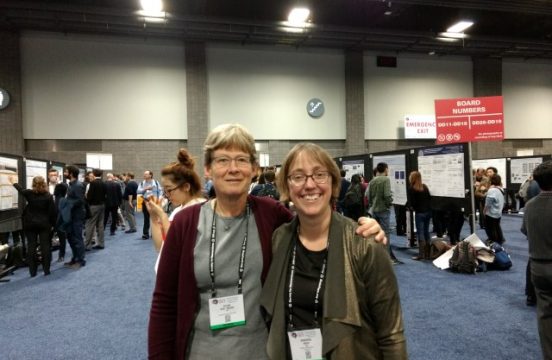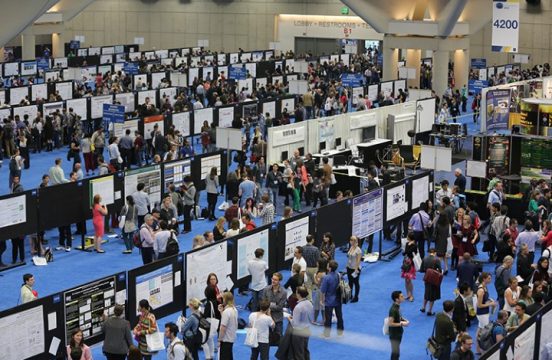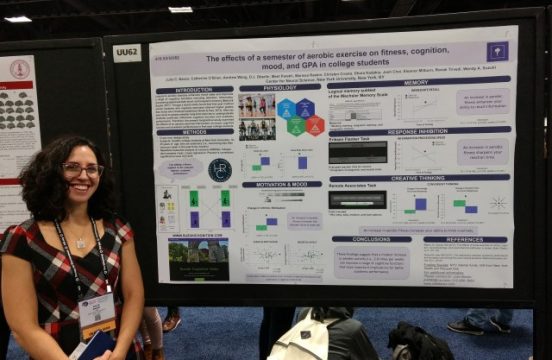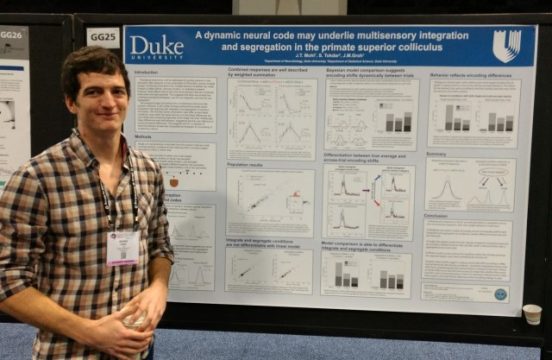Annual meeting Society for Neuroscience 2017
Visiting the annual meeting of the Society for Neuroscience (SfN2017) has been a great succes for me. Meeting the neuroscientists in flesh and blood is a great change from meeting them only online.
The meeting is a massive event 30.000 neuroscientists meeting on their favorite topic. There are poster sessions, symposia and minisymposia, workshops, clinical roundtable meetings, events and meetings.
Posters
There were wonderful posters and I had wonderful opportunities to interact with poster presenters. A wonderful way to meet the world of neuroscience at a detailed scientific level.
I started visiting the poster sessions looking for posters with specific content. During the meeting I changed my poster session strategy. Later I began to look for presenters that could learn from posters presented by their peers and presenters that ware obviously fresh or not receiving a lot of attention. To presenters I started giving feedback on their poster or presentation. I advised them to look at an especially good poster in the same session or showed them a photo of a good poster for comparison (see image slider). For example I had a nice experiences when I asked Jeff (see image in slider) for instance to give me more information his first question was: “Do you want the 2 minutes or 5 minutes walktrough” and when I settled for the short version Jeff gave me a clear to the point presentation. A true gem of a presentation.
Evidence-Based Approaches to Teaching Neuroscience
This workshop was especially relevant to me, with a lot of information on evidence based approaches that either prof. White is using in the course or that I’m using on the website learnmedicalneuroscience.nl. For instance D. Willingham (University of Virginia, Charlottesville, VA.) remarked that 80% of students were never taught how to study.
Prof. White tells students to “follow the path”and “visualize your knowledge”. I give students insight in a good study strategy on the page Study Strategy and study tips related to course content. (for example General Study Tips and Study Tips Neuroanatomy). Students Medical Neuroscience are getting instruction on how to learn.
Symposia
There are different types of symposia: Symposia (audience size 500-1000; 2 hour, 30 minutes total duration each presentation 35 minutes)
Minisymposia (audience 500-1000. 2 hour, 30 minutes total and 20 minutes each presentation). Nanosymposia (audience 200-600, total duration 2 – 4 hours, 15 minutes each presentation).
The nano symposia are for starting scientists. The short talks are often on more detailed neuroscience subjects. Here it became clear to me that oral presentation is a real art and this is the place were this learning starts. Obviously these symposia are a wonderful podium to learn the art of oral presentation. For me they often go too much into detail. I do not have detailed knowledge about one subject but I do have a good general knowledge of neuroscience. Other types of presentations suit me better.
It must seem unusual but well organised symposia and mini symposia give a break from the hectic poster hall were you have to walk quite some distance to find posters. They can generally speaking give a good opportunity to come to rest and be immersed in neuroscience at the same time. As I learned in the minisymposium: “Neuroethology of Listening: Learning, Perception, and Preference in Female Songbirds”. If I visit another annual meeting I might go to more symposia and minisymposia than I did this time.
Lectures
There are several type of lectures: Featured lectures and special lectures all lasting about 1:10 hours. They are really very good giving a broad overview of state of the art neuroscience without going into overwhelming details. If there should be Olympic Games for oral presentations to a huge audience many of these presenters would be in the Gold Medal class.
For instance: T.E.J. Behrens with: ‘Building Models of the World for Behavioral Control’. He gave a clear overview of the field without using mathematical models or giving too much attention to detail. In the first place he created a clear talk structure at the beginning. Thereafter explained each module and eventually took al partial steps together in the conclusion. I am not very familiar with the theoretical foundation of the talk to say the least, but it gave me the feeling it came all together and that after the talk I had got the message.
I also loved the interview of Siddhartha Mukherjee (author of ‘The Emperor of All Maladies: A Biography of Cancer’) in the dialogues between neuroscience and society, which was more about wisdom and insight than actual data based science.
Another favorite I can not leave out was E.D. Jarvis with ‘Insights From Nonhuman Animals Into the Neurobiology of Language’ which for me was a clear link between neuroscience and my background as a biologist with experience in ethology.
And more brilliant lectures
‘Using Memory to Guide Decisions’by D. Shohamy about the neural and cognitive mechanisms of decision making and learning. I really want to read recent literature on this topic. I just want to learn more about it.
‘Artificial Intelligence and Imagination: Exploring the Frontiers of Knowledge’ by D. Hassabis (cofounder of DeepMind, a machine learning AI startup) was a mind blowing presentation. Clear examples from AlphaGo and AlphaGo Zero. Showing the audience that the computer can reach the level of 3.00 year of human Go playing in a very short time and even can surprise Go champions with very clever and unheard of moves and strategies.
There were many, many more. I managed too go to many of the lectures but had to miss a few because I had other priorities at that moment.
Concluding I can just say that I feel so privileged to have been part of SfN2017.



